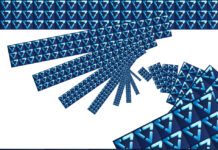Supermicro says Fibre Channel is on the way out, but SAS lives on and NVMe is rising
Interview: We had the opportunity to discuss storage servers with Supermicro and find out how it designs and customizes them…
MinIO hires business and marketing execs amid object AI rush
Open source object code developer MinIO has appointed its first chief business and marketing officers as AI training and inferencing…
Storage news ticker – March 4
Cloudian will present two technical sessions and demos of its AI-optimized storage at Nvidia GTC 2025, Booth 219, in the…
Storage challengers threaten incumbents as acquisition pressure mounts
Comment Massive scale-out, file, and object storage winds are blowing through the incumbent storage supplier halls and threaten to become…
Storage news ticker – February 28
Backup and cloud storage supplier Backblaze announced results for Q4 2024 and the full year. Q4 revenues were $33.8 million,…
Private equity pair make Egnyte majority buy
Cloud content collaborator Egnyte is now majority-owned by a pair of private equity companies. GI Partners (GI) and TA Associates (TA)…
DDN on files, objects and AI training and inference
Interview DDN has been supplying high speed file access with its EXAScaler Lustre parallel file system software for many years.…
StorONE advances auto-tiering with AI-driven TierONE
StorONE is offering updated storage tiering with AI-powered TierONE software and improved data protection with SnapONE. The company claims customers…
DDN unveils Infinia 2.0 object storage for faster AI data pipelines
DDN has announced the Infinia 2.0 object store for AI training and inference, making big claims for up to 100x…
VAST Data expands into block storage and event broking
VAST Data has added block access to its existing file and object protocol support along with Kafka event broking to…
How constant frustration drives storage developments
Comment Storage is always in flux, from underlying media to new ways to access on-drive storage and specialized large language…
Storage news roundup - 15 February 2025
Aerospike unveiled Database 8, a major upgrade of its flagship multi-model distributed database. V8 adds distributed ACID transactions to support…
Quantum reports steep losses, says better times lie ahead
Data storage supplier and protector Quantum reported a revenue upturn in its third fiscal quarter of 2025 and a massive…
HPE Alletra X10000 redefines scale-out hardware
Analysis: The Alletra MP X10000 object storage system from HPE is representative of a new class of scale-out storage hardware…
A VAST effort: Data estate vectorization and storage for the AI era
All data storage companies are having to respond to the wave of generative AI and intelligent agents interrogating an organization’s…
VDURA: AI training and inference needs optimized file and object balance
Much interest has been sparked across the storage world by assertions that object storage is best for AI training and…
Storage news ticker – February 7
Alluxio Enterprise AI v3.5 accelerates AI model training and streamlines operations with a new Cache Only Write Mode to accelerate…
Hammerspace challenges object storage norms for AI
Data orchestrator Hammerspace is challenging the conventional wisdom that object storage is the optimal solution for AI training and inference,…

















